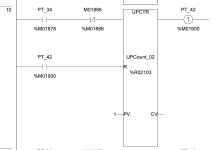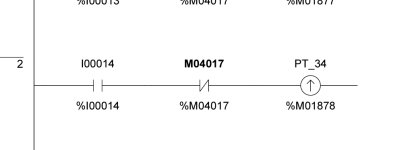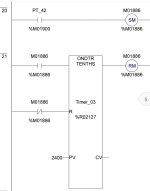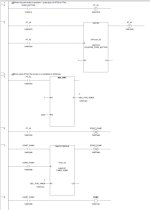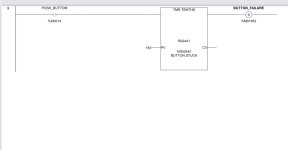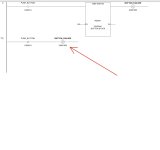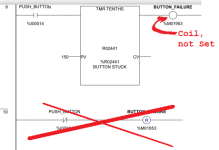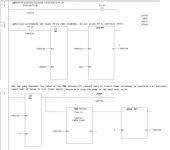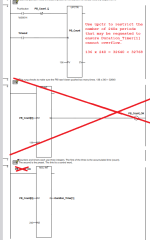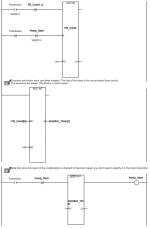I don't have much experience in programming. I can do simple configuration.
it is like this. i want to add something to the existing ladder logic in my rx3i (ladder logic pac machine edition 9.8 sim 3).
the current program: is that every time (pt) input comes in, a counter goes up by 1 and the time starts 240 sec. i want the (pt) to be a pulse every time I press the button, 240 seconds must be added. for example. I press 1 time the counter goes up by 1 and the timer of 240 sec starts running. if I press 2 times in a row, then 2 pulses go to the counter and timer and the counter has gone up 2 and the timer is at 480 sec. also with 4 pulses. the counter goes up by 4 and the time of the timer goes up by (4x240sec) so 960 sec. so any pulse that comes in addition to that on top of the current counter and timer running then. how can i do that best by doing this, (move or shift word/bit). I can send the current situation on photo to clarify or via a zip file.
sorry for my bad English. it is not my native language.
it is like this. i want to add something to the existing ladder logic in my rx3i (ladder logic pac machine edition 9.8 sim 3).
the current program: is that every time (pt) input comes in, a counter goes up by 1 and the time starts 240 sec. i want the (pt) to be a pulse every time I press the button, 240 seconds must be added. for example. I press 1 time the counter goes up by 1 and the timer of 240 sec starts running. if I press 2 times in a row, then 2 pulses go to the counter and timer and the counter has gone up 2 and the timer is at 480 sec. also with 4 pulses. the counter goes up by 4 and the time of the timer goes up by (4x240sec) so 960 sec. so any pulse that comes in addition to that on top of the current counter and timer running then. how can i do that best by doing this, (move or shift word/bit). I can send the current situation on photo to clarify or via a zip file.
sorry for my bad English. it is not my native language.




